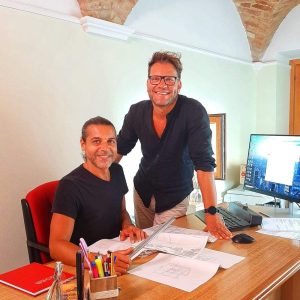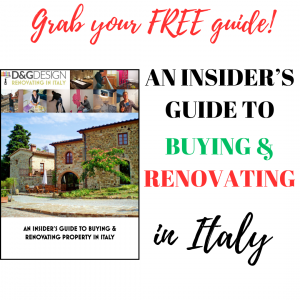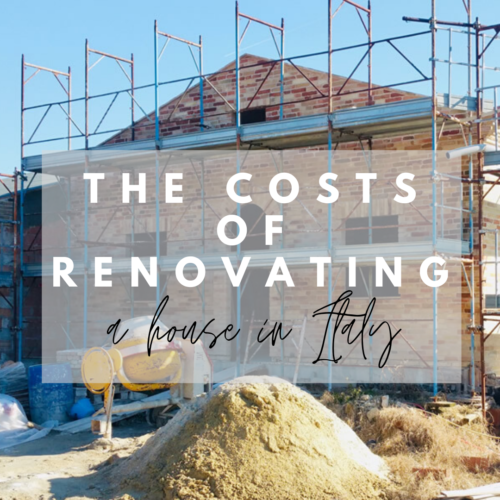
What are the Costs of Renovating a House in Italy?
A question that we are often asked at D&G Design is “How much does it cost to renovate a house in Italy?”
Just like the proverbial piece of string, houses come in a variety of shapes, sizes, and states of disrepair, so it’s very difficult to give a one-size-fits-all answer.
With that being said, there are some pretty useful guidelines and examples that we can give of projects that we have worked on, which should help in assessing the amount you will need to budget should you find your own restoration project.
Rebuild
Le Marche, and much of Italy, is home to thousands upon thousands of ruins that need to be completely restored, or ‘tutte ristruturazione’. These ruins are usually old family farmhouses that have been inherited through generations and we have met many an owner who remembers visiting grandparents in some, derelict old shack that was once a thriving family home.
With many younger Italians favouring more modern properties, numerous ruins have fallen into disrepair, with outdated plumbing and electricity systems at best, or just a couple of remaining, crumbling walls left standing at worst.
Our hearts usually sink when an owner proudly presents his or her ancient family heirloom and gives us a tour of where the rooms used to be, now hidden by huge weeds, bushes or even trees. We have seen more of these ruins than we can count, and each begs the question ‘How have you let this happen?!’
Of course we are much too polite to ask, but what we do point out is that if the owner really expects to get a ruin off his or her hands, s/he will practically have to give it away.
When a ruin, or rudere, is in such a state of disrepair, with no roof, crumbling incomplete walls, and dangerous flooring, it is often cheaper to pull it down and start again than to try and work with what’s left.
Any stone bricks or roof tiles can be repurposed, so that the ruin retains its character and materials are not wasted, and what better way to pay tribute to the old property than by using its original features.
Local laws allow the footprint of a ruin to be extended by up to 20 – 30%, giving the new buyer a larger home. Planning permission must be obtained, as will the services of a structural engineer or geometra to provide detailed plans of the works involved, and submit this request to the local council’s planning authority.
Restoring a ruin
Restoring a ruin usually requires an investment of around €1,500 per square metre in Le Marche, which includes all materials and labour needed for rebuilding, wiring, plumbing, flooring, roofing, as well as fixtures and fittings including doors, windows and mid-range bathroom suites.
This is a very useful guideline in determining whether the asking price is realistic. If the property comes with a large amount of land, expect the price to be higher.
Our clients Mike and Jennifer bought a 180 square metre ruin and knocked it down, rebuilding it to its original specifications. They bought the ruin for €20,000 – great value for the plot of land it sat on (900 square metres) and spent a further €270,000 on the rebuild.
Jennifer says ‘for just under €300,000 we now have a beautiful farmhouse with a huge garden, worth much more than we spent on it. Not that we will ever sell, as it took almost a year of our lives so we will be here forever!’
Mike and Jennifer lived in the US during the rebuild, and we updated them every step of the way so that they could see their new home taking shape.
For Mike, this was an ideal scenario. ‘We had never done anything like this before. Previously, we lived in our home in the US while we made some modifications, so to do this in another country while we were miles away was quite daunting. But we felt as though we were in Italy during the process as David & Gary sent us regular videos and photos, showing us the progress of the work as our house took shape.’
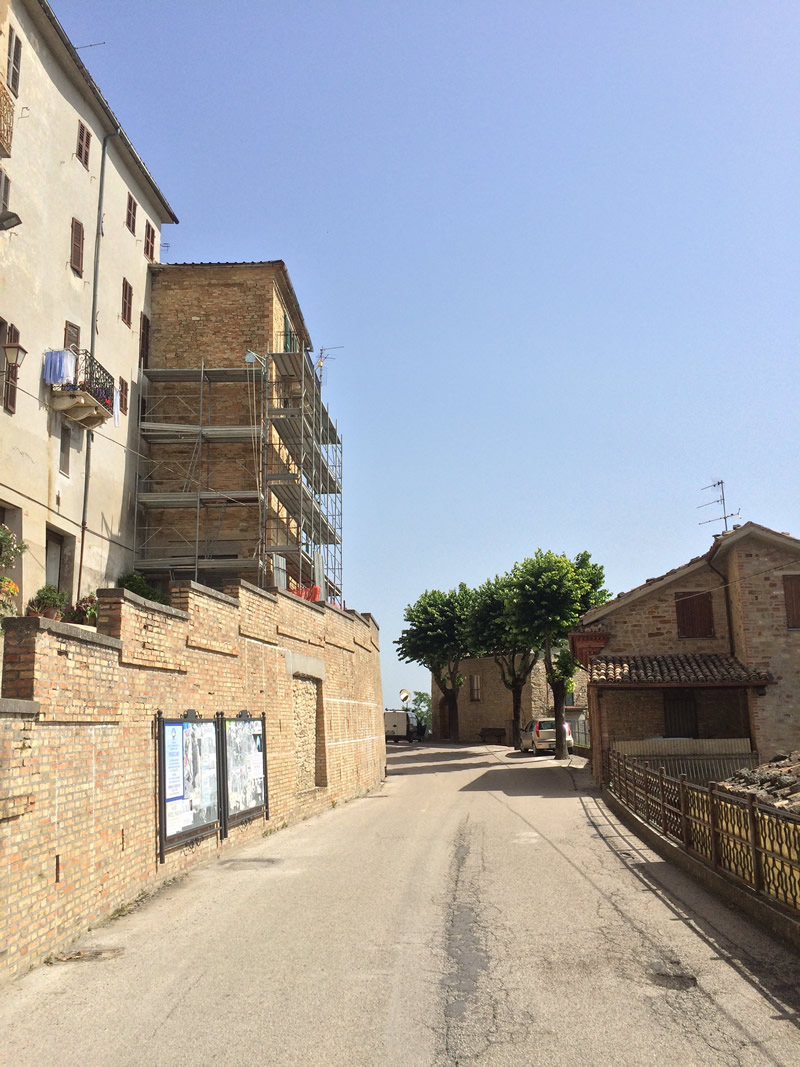
Total restoration
Many houses are in a less than desirable condition but do not need to be knocked down, they simply need to be made habitable with some restoration and renovations.
Our own home in a small hilltop town, was on the market for €90,000. At 180 square metres, the tall townhouse had been neglected for several years and damaged by earthquakes, so that the floors were loose, the wall plaster very flaky and the property needed a new roof. Window frames had rotted, as had the shutters, and the once beautiful oak front doors had faded and were now brittle and swollen.
The house was in need of new rewiring and plumbing and the ancient boiler and heating system needed to be replaced. The asbestos roof had to be removed and replaced with a brand new one. Then came the all-important anti-seismic work, which included pinning the property to tie the walls together with the use of huge iron bars.
A fair amount of work, despite the fact that from the outside, the house looked as though it only needed some pointing and repair work to the stone brick walls.
Our structural engineer costed each element of the project for us, prior to us buying the home. At roughly €1,100 per square metre, we negotiated the sale price to reflect the amount we would need to spend on renovation work. Once we had purchased the house, the local council granted us planning permission in less than one month.
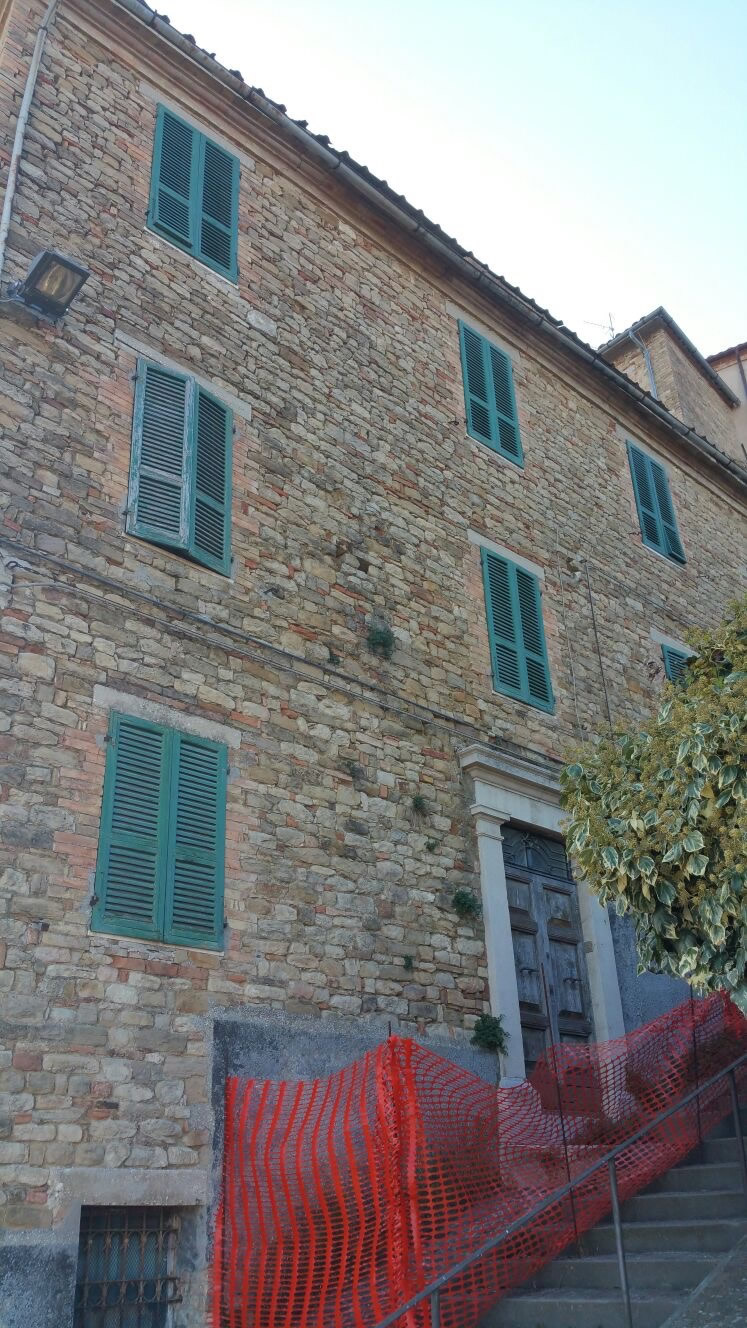
When we eventually got the sale price down to €50,000, people told us what a bargain we had. ‘Some cars cost more than that!’ we would often hear. However, to make the house habitable and safe from earthquakes and asbestos, we spent €198,000 on the restoration. Still a good price for a large house, but a very different amount from the relatively low asking price.
Paul & Michelle bought a run-down farmhouse in Marche’s beautiful countryside, facing the Sibillini mountains and a scattering of small towns in the valley it overlooked. The neglected home needed a complete restoration, but not a rebuild as the structure was in relatively good condition.
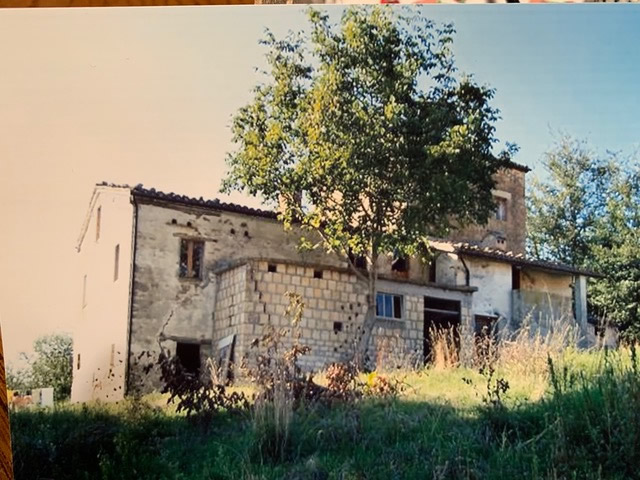
As a structural engineer in his native UK, Paul worked closely with his geometra and helped with the design of the new home.
Paul says, ‘Because my qualifications would only be recognised in Italy if I passed the exams here, I wasn’t able to oversee the project, but enlisted an excellent geometra who allowed me to work closely with him in bringing our vision for the home to life.’
Paul’s total renovation took just over a year to complete, and he went slightly over the budgeted €1,500 per square metre as he chose to use eco-friendly heating systems and installed solar panels.
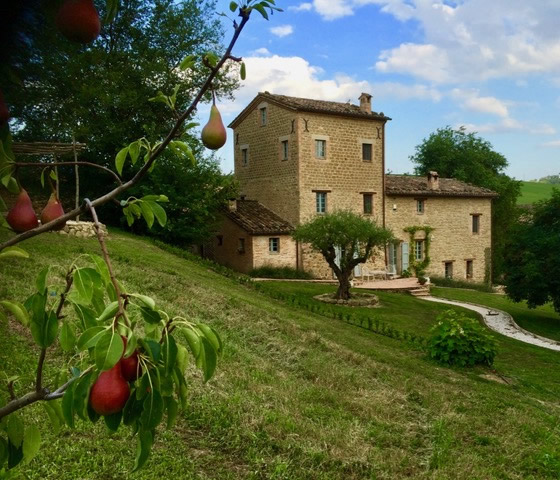
When Jayne and David bought a ruin and renovated it, the planning application submitted by their geometra was approved in only two weeks. They calculated that their restoration costs would be just under €1,500 per square metre and stayed within this budget.
Gabrielle, the geometra who assists us in many of our projects tells us, ‘Many local communes will approve work as quickly as possible as they want to see these properties restored. Some mayors have also come up with schemes such as selling off ruins and run-down houses for €1, but of course you still must apply the renovation costs when deciding whether you want to purchase any home.’
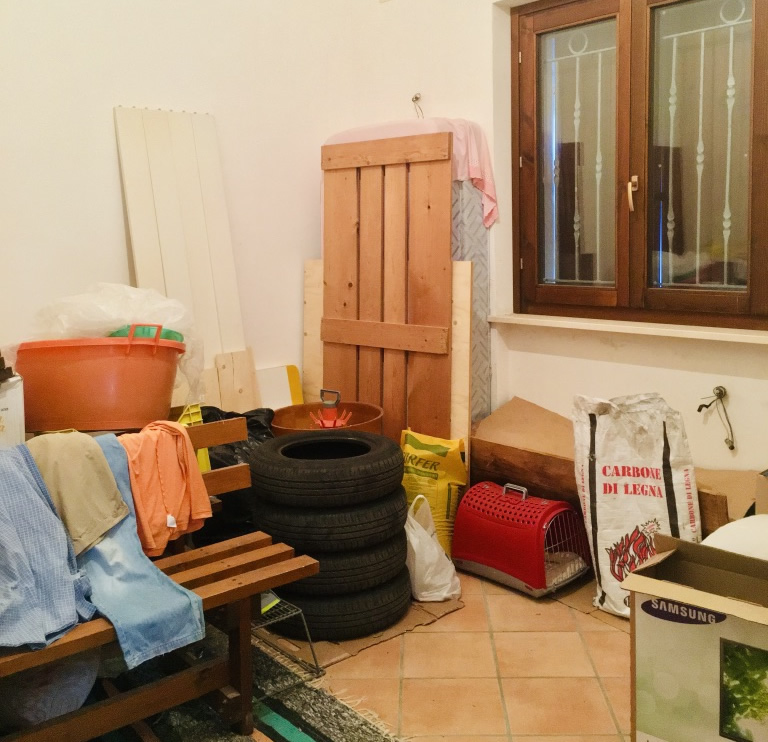
Minor renovations
There are plenty of homes on the market that need little or no structural work, meaning that sometimes these can be moved into straight away. While newer houses or apartments may need rewiring to an updated electrical system, this isn’t always the case, or can be carried out at a later date.

Tina and Charles’ farmhouse was habitable, and they enlisted us to design and decorate each room, beginning with the living room. We took the plaster off of the internal walls to expose and repoint the beautiful stone, added uplighting and used our favourite flooring supplier to lay a beautiful wooden floor.
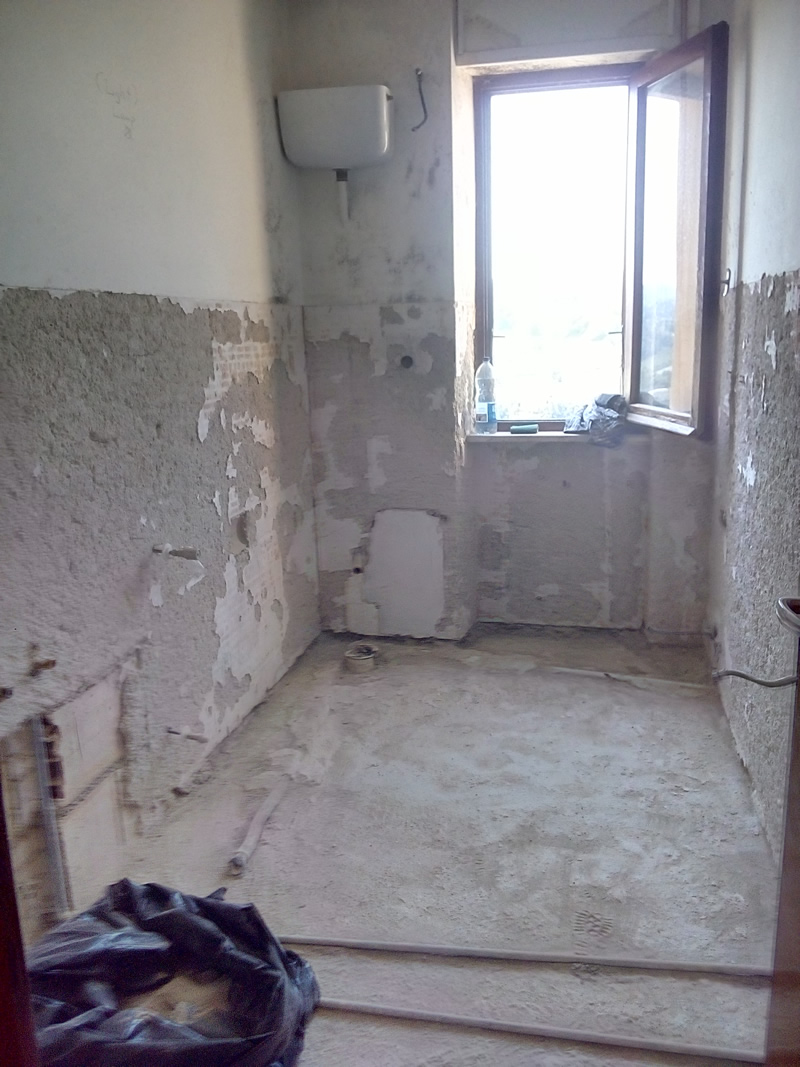
When Mick and Adrianne bought their apartment in Amandola, a small town in Marche, it needed no structural work so they were able to put their own stamp on it fairly quickly, replacing the windows with double glazing, and enlisting us to install a new bathroom. The heating and electrics will need replacing at some point, but the pair will do this during a later phase and can live in the apartment until then.
Using all Italian products, from wall and floor tiles and toilet and shower, we worked with our plumber to complete the bathroom renovation and make the apartment liveable in the meantime.
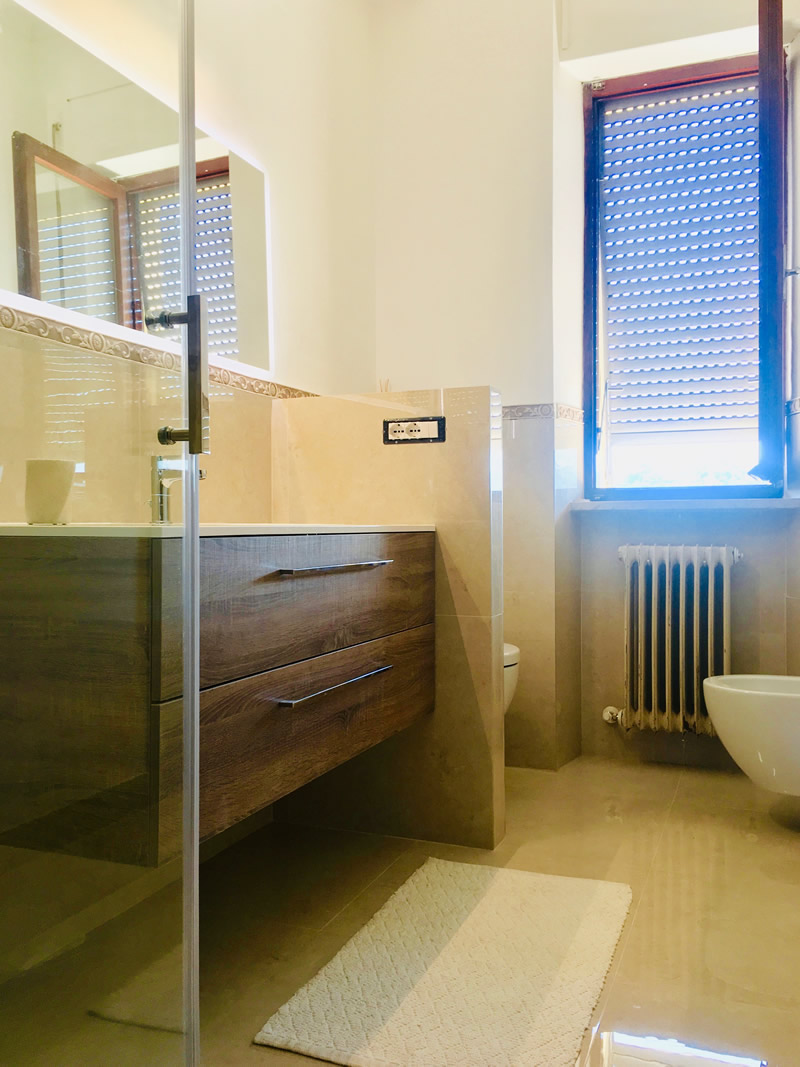
Our golden rule when renovating an Italian house is not to rush. If you are in your home country, earning money to complete the project, focus on the essentials first. Make it habitable so that you can enjoy it, and do the rest in phases as your budget allows. Of course where a house needs rewiring and new plumbing, it pays to do this all in one go, and when you add the costs of the plaster work needed, the first phase of a project can turn out to be the most costly.
There is a lot to be said for remote renovations, you get to see the project progress through images and videos, and you don’t have to live amongst the mess!
READ MORE: ITALIAN HOME DESIGN & RENOVATIONS
SIGN UP TO JOIN OUR WAITLIST
We’ll email you the details as soon as they’re available.

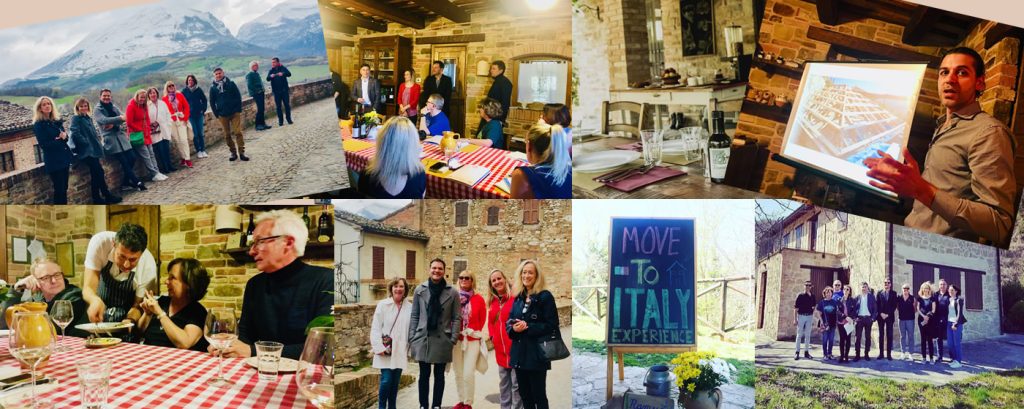 Take the first step to your new life in Italy by spending five days with us in Le Marche to gain all the advice you need.
Take the first step to your new life in Italy by spending five days with us in Le Marche to gain all the advice you need.


